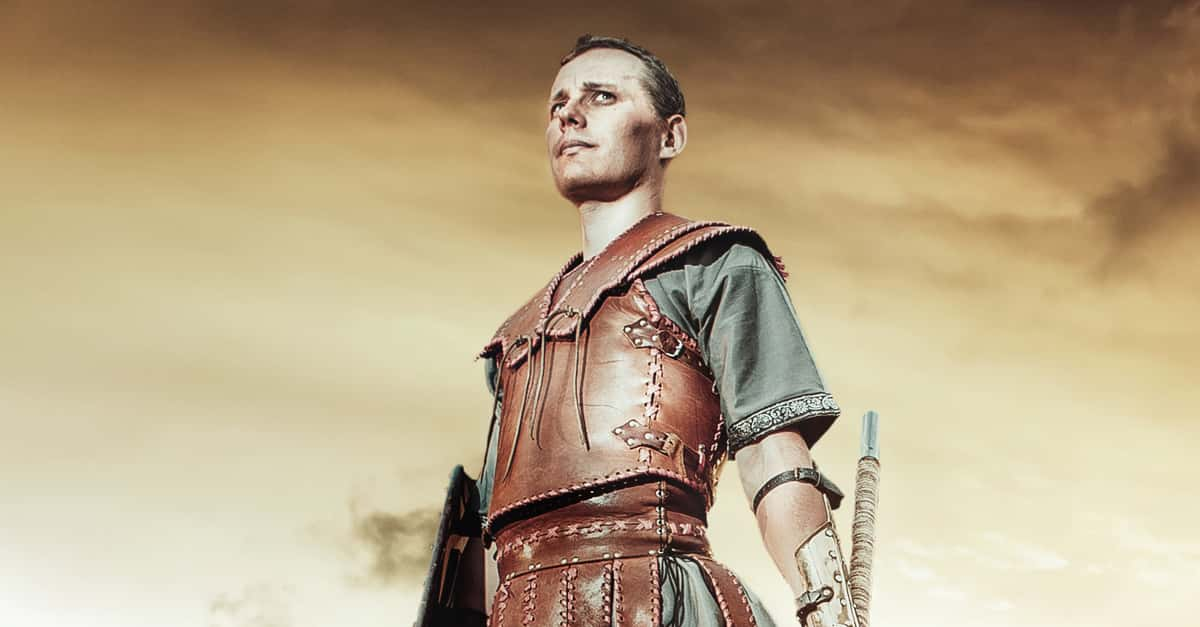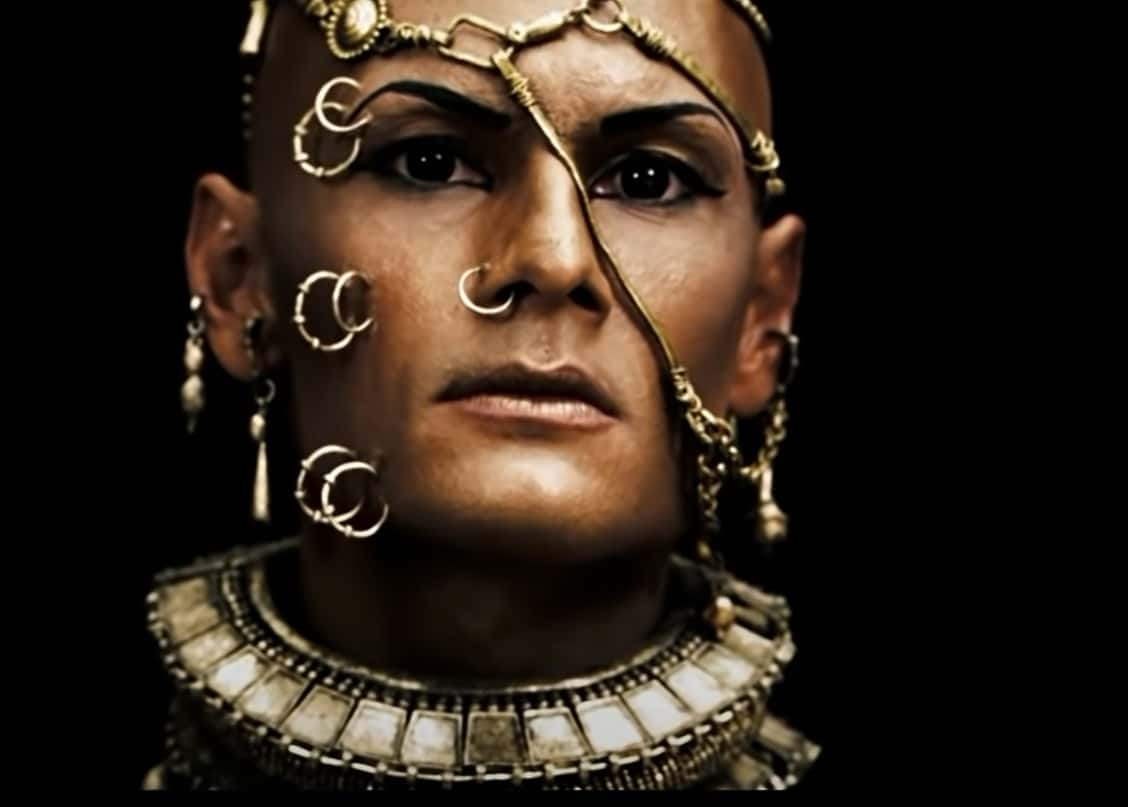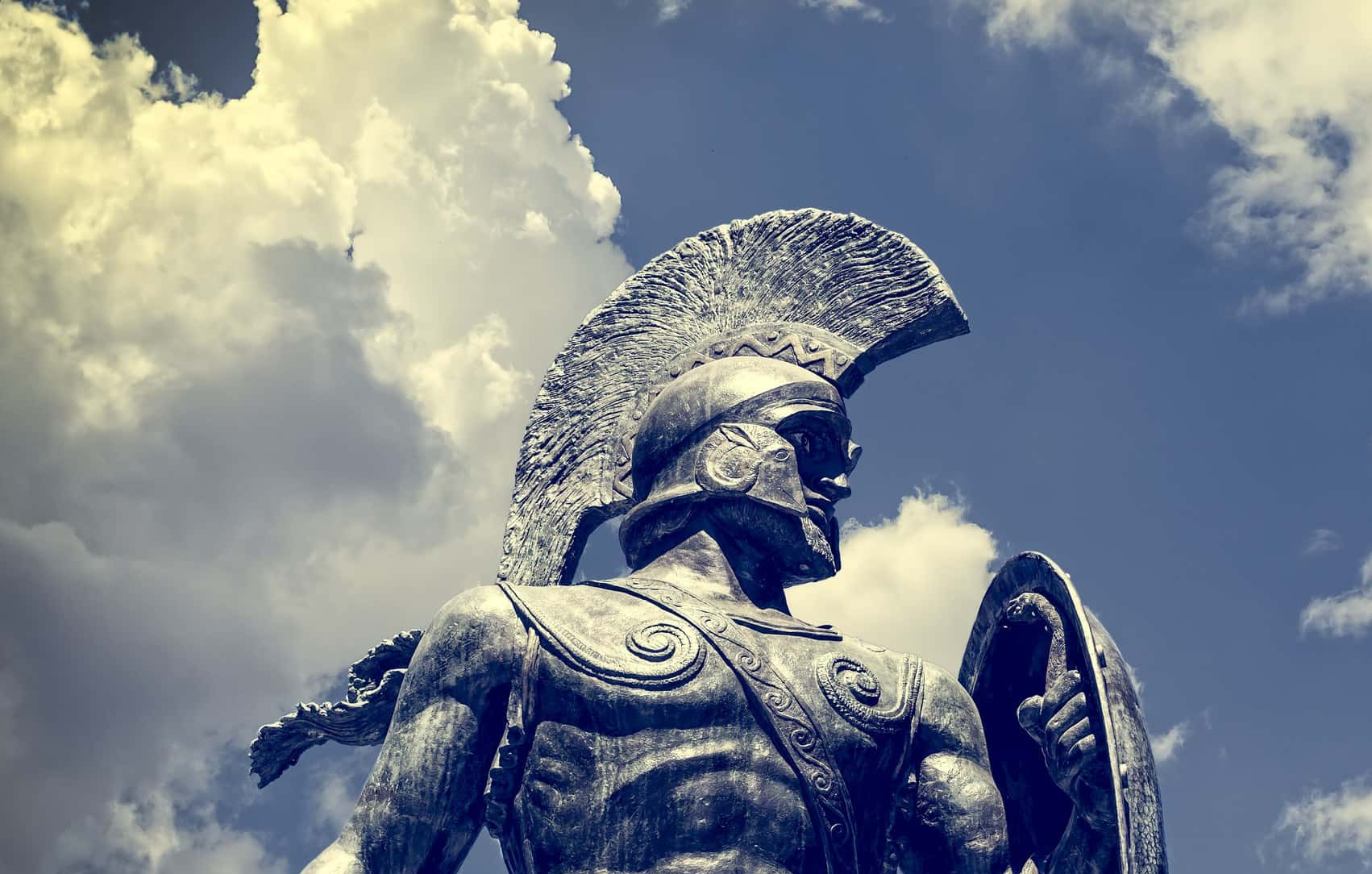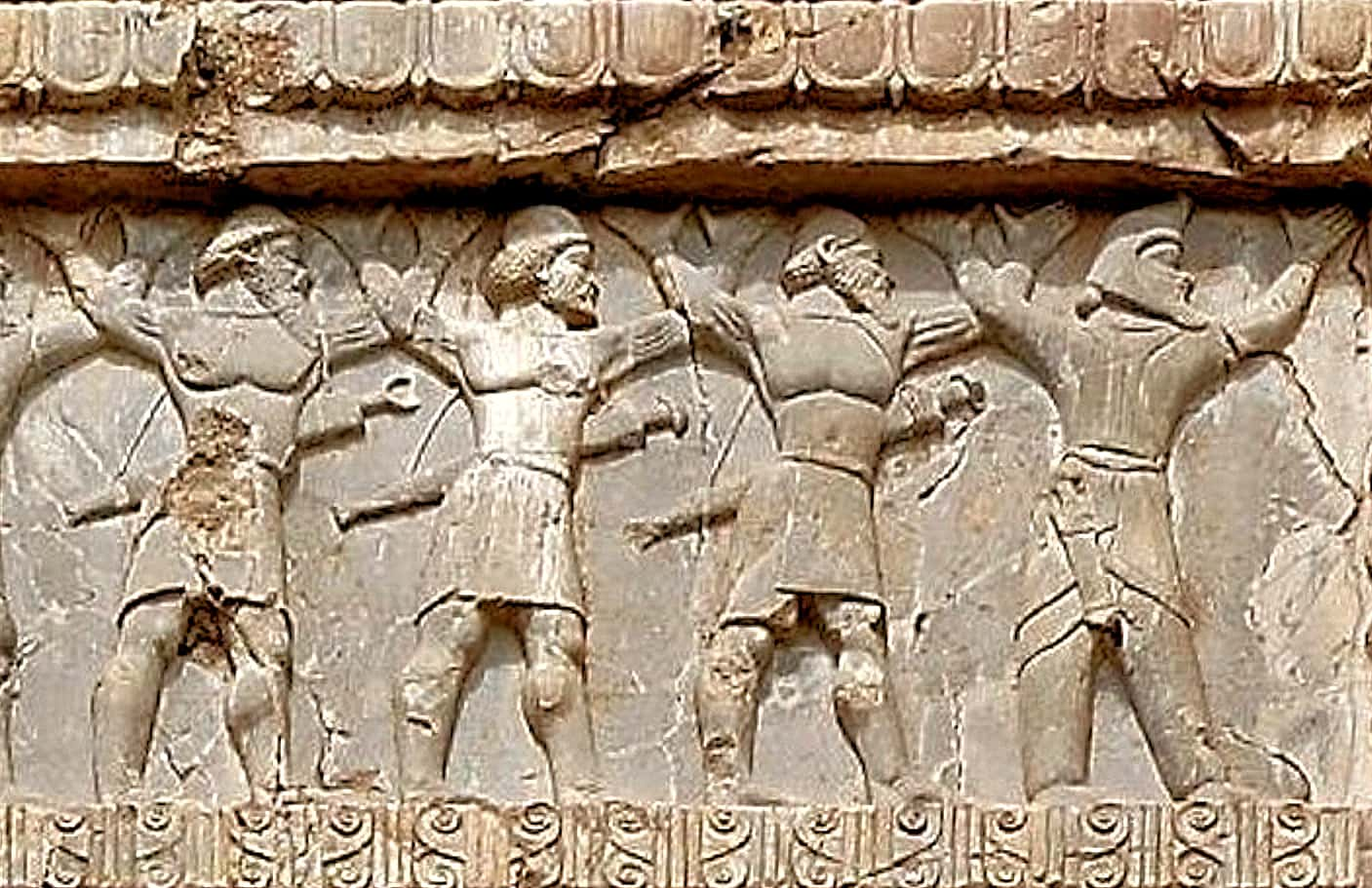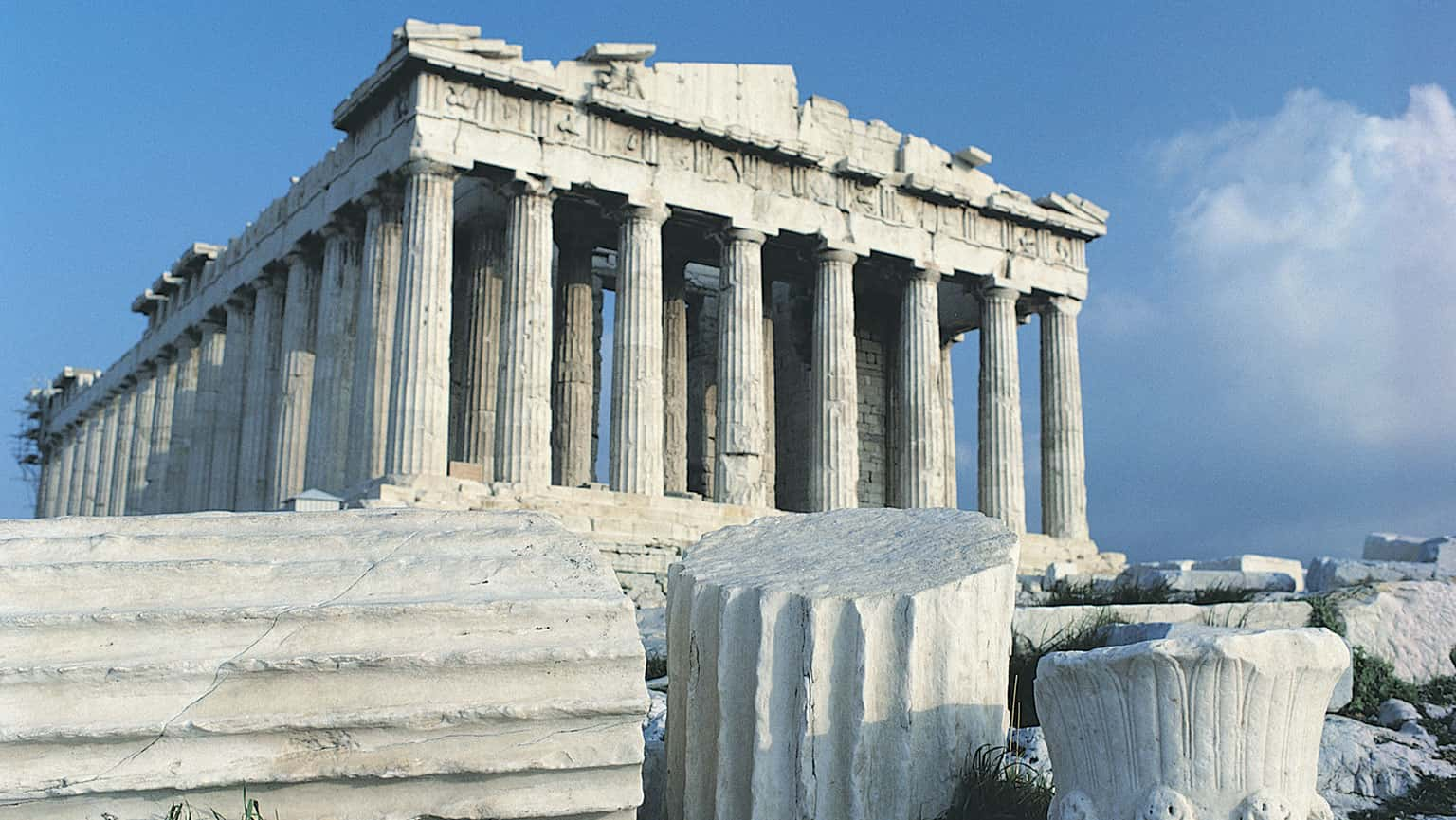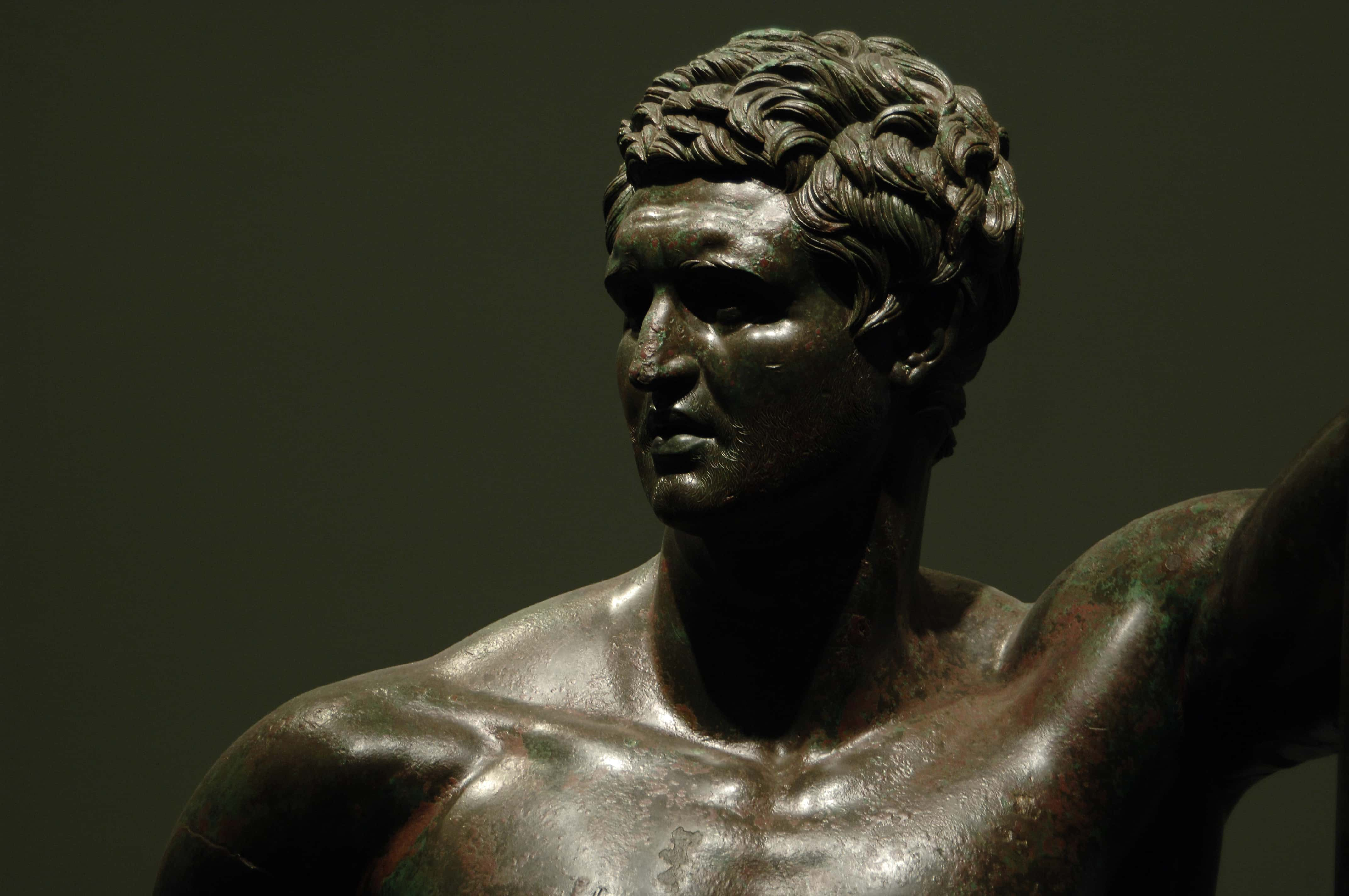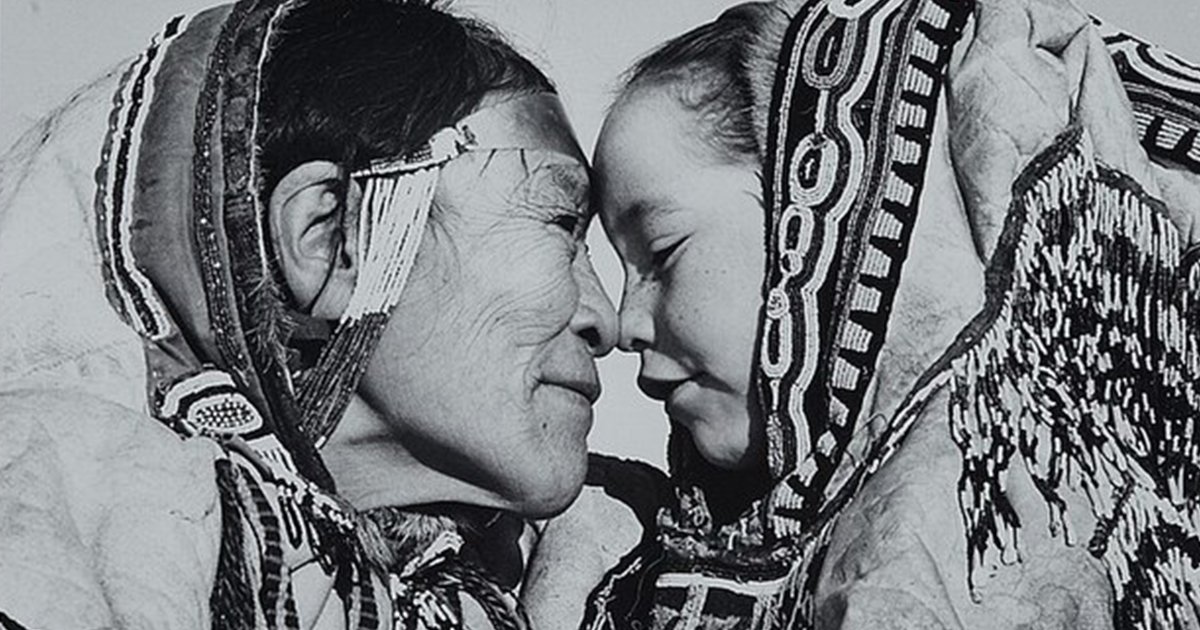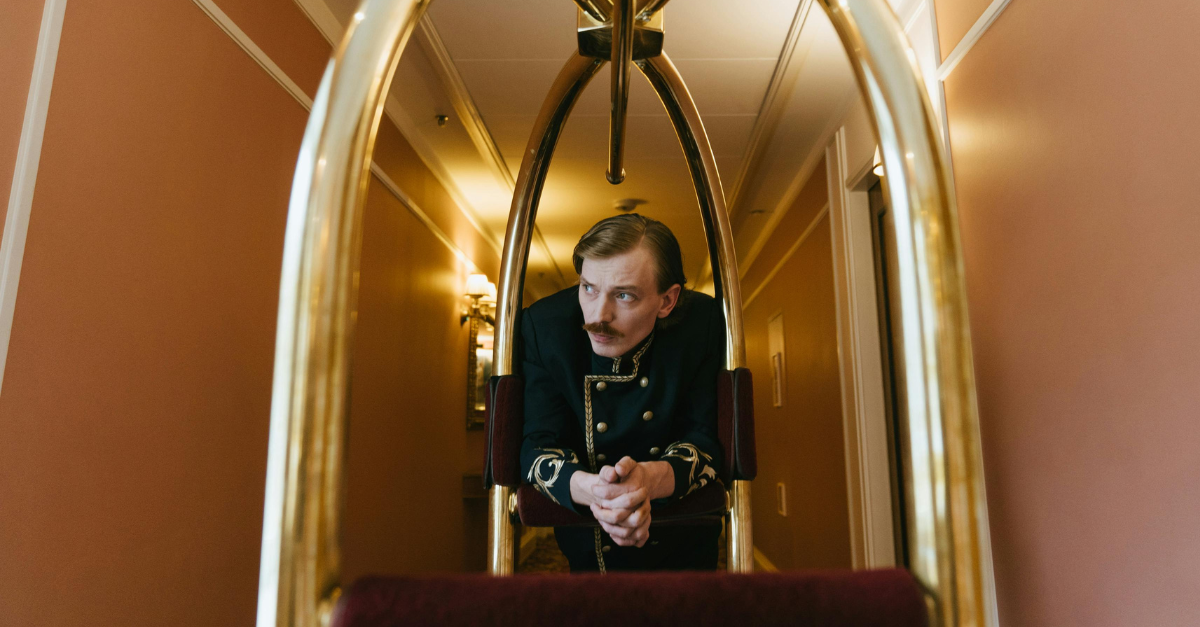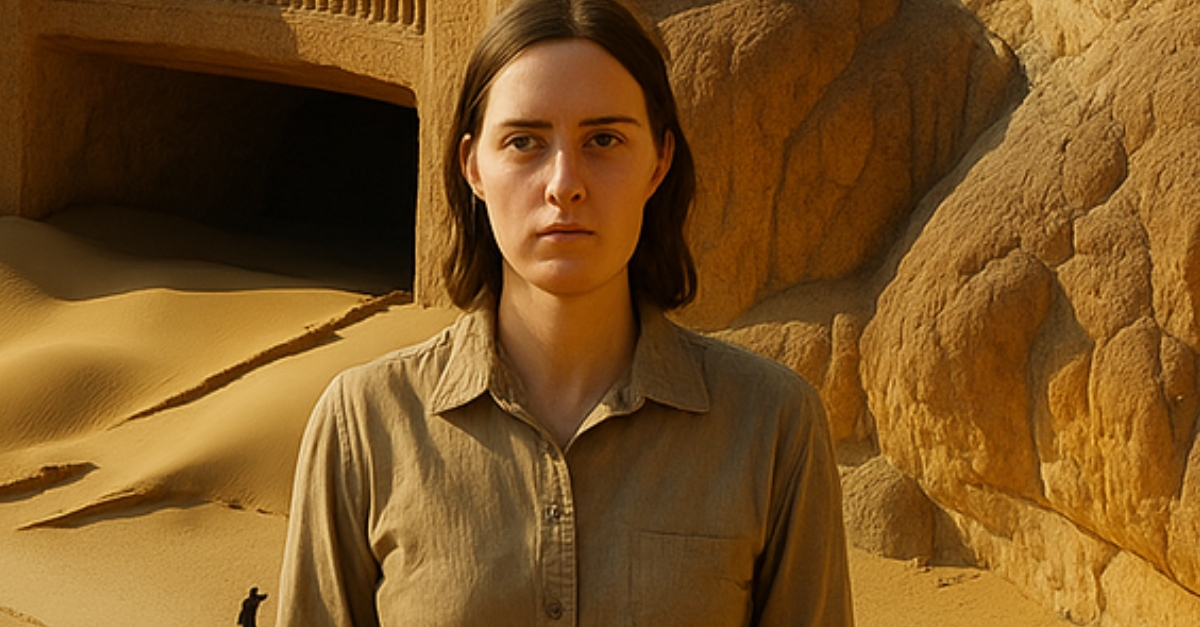Ancient Greek Facts
Ancient Greece was a heck of a place. Several famous city-states warred almost constantly. Empires invaded. Conquerors emerged. And throughout all of that, the foundations of modern science, math, politics, and more were created. There's a reason Greek history and mythology still captivates us to this day. But there's more to this famous civilization than what you find in the history books. Coocoo philosophers, brutal warriors, and pirate queens all called Ancient Greece their home.
1. Featherless Friends
The ancient philosopher Diogenes once delivered Plato a plucked chicken and called it a “man.” You see, Plato had argued that man was nothing but “a featherless biped.” To show Plato what an assumption that was, Diogenes picked up his poultry pal and had it plucked. His bravado forced Plato to amend that definition of “man” to include “with broad flat nails.”

2. Alone Time Isn’t Fun Time For Everyone
We imagine it was hard to offend those Ancient Greeks, but the eccentric Diogenes pushed those boundaries by engaging in self-indulgent behaviors while inside a barrel.. Frequently. And in public. Diogenes defended his behavior by saying how he wished it was “as easy to relieve hunger by rubbing an empty stomach,” as if that counts as a defense.
3. Wash Your Brain and Your Hands
Adding to the list of Diogenes’ social faux pas, the philosopher was also (allegedly) known for pooping in public theatres and urinating on “annoying” people. Well, it takes one to know one, Diogenes.
4. Well, This Took a Turn…
King Leonidas’s father was Anaxandridas of Sparta and we sadly don’t know the name of his mother. However, we do know that Leonidas’s mother wasn’t just Anaxandridas’s wife. She was also his niece! We can see where George R.R. Martin gets his inspiration from…
5. Keeping it in the Family
Sparta was almost always ruled by two kings, and Leonidas was no different. He shared the crown with his half-brother Cleomenes. Following his father's tendency for inter-family marriages, Leonidas also ended up marrying Cleomenes's daughter, Gorgo.

6. That was Cold-Blooded!
To make Leonidas and Gorgo’s wedding even more awkward, keep in mind that they only got married after Cleomenes had been deposed and imprisoned on the grounds that he’d fought against his co-king. Leonidas was fully involved in the imprisonment of his half-brother, who was also declared to be insane. According to the histories, Cleomenes would later be discovered lifeless in his cell.His demise was reported as self-inflicted harm.
It seems pretty suspicious if you ask us. This leads us to merely speculate whether Leonidas proposed to Gorgo before or after she discovered her father's demise—once again, Leonidas' involvement in which remains uncertain.

7. Such a Storyteller
The primary source for the legendary Battle of Thermopylae comes from the ancient Greek historian Herodotus, known as the Father of History. To be fair, he was also called the Father of Lies for his tendency to also report on stories that were largely fictional, as well as for his exaggerations. Modern historians have had to take Herodotus’ comments with a grain of salt in search of the truth as opposed to his idea of a better story
8. Oh What’s in a Name?
The name "Thermopylae" translates to "Hot Gates" in the original Greek. This name was given to the narrow pass because of the warm sulphur springs which originated there. According to the Greek myths, the mighty warrior Herakles (or Hercules, if you're into Latin) was tricked into putting on clothes which had been soaked in the blood of the Hydra.
He was unable to take the clothes off and they began boiling him alive. When he plunged into the waters to soothe himself, the poison, in reality, warmed the water and made it harmful, thus forming the sulfuric springs from which the pass got its name.
9. So Why Here?
Thermopylae was the ideal battleground for a defense against the invading army of the Persian Emperor Xerxes. Back in antiquity, the passage was extremely narrow, suited excellently for a small militia to withstand a massive onslaught of enemy forces.
10. Does That Make Him the Lion King?
Leonidas’s name translates from the ancient Greek language to mean “son of the lion.” It’s safe to say that his dad had a bit of an ego.
11. Accurate, but Also Inaccurate
One of the iconic scenes from the movie 300 saw Persian envoys demand a gift of “earth and water.” In response, Leonidas and his men cast the messengers into a well. According to Herodotus, this did actually happen, but not with Leonidas. This scene occurred prior to the invasion of Greece by Xerxes’ father, Darius I—long before Leonidas was king of Sparta.
12. Can Someone Take a Census?
There is a great deal of controversy surrounding the number of Greek warriors who defended the pass at Thermopylae. Herodotus asserted that there were between 5,200 and 6,100 (he doesn't specify exactly the quantity that made up "all they had" in terms of men from Opuntian Locris). According to Diodorus Siculus, around 7,400 Greeks fought against the Persians. Either way, those 300 Spartans suddenly don’t seem quite so special, do they?
13. Sounds Like a Heck of a Week
The Battle of Thermopylae was reported to have lasted three days, though the Persians delayed for four days, reportedly because Xerxes couldn’t believe that such a small number of Greeks actually planned to fight his army.
14. Where Does it End?
Among the many units in the Persian army, the elite forces were the ones referred to by the Greeks as the Persian Immortals (their original title in the Persian language has been lost to history). This unit, characterized by Herodotus as heavy infantry, were seemingly referred to as the Immortals. The reason behind their name being that, whenever a member was lost, incapacitated or fell, another was promptly brought in to take their place. This way, the Immortals never numbered more or less than 10,000 warriors.
15. Senior Citizen
Contrary to what 300 might have told you, King Leonidas wasn’t a man in his prime with a Scottish accent. According to historical sources, Leonidas was said to have been an aging man at the Battle of Thermopylae, in his late 50s and maybe even as old as 60! To be honest, the fact that he was so advanced in age and still engaging Persians in extreme combat makes his story even more impressive than if he was a young man—but perhaps slightly more challenging to portray.
16. Too Good to Make Up
Incredibly, 300 got a few quotes completely accurate about the Battle of Thermopylae, if the historical records can be trusted. It is said that King Leonidas reportedly responded with "Come and get them!" when the Persians demanded the Greeks to hand over their armaments. Likewise, both Plutarch and Herodotus claim an exchange happened where a joke was made about fighting in the shade while the Persian arrows blocked the sun itself.
However, the historians disagree on who said the punchline, with Herodotus crediting a Spartan named Dienekes and Plutarch claiming it was Leonidas.
17. Persia’s Pyrrhic Victory
While the Battle of Thermopylae was happening, the Battle of Artemisium was being fought on the sea. The combined Greek fleets met the much larger Persian fleet even as a storm was raging across part of the battlefield (is it still a field if it’s at sea?). Both sides suffered heavy losses, but it was harder on the Greeks, who lost between a third and half of their ships.
18. How Are We Losing?!
On the first day of fighting, the Persians initially sent arrows at the Greeks, and when that failed to defeat them, a wave of Medes and Cissians struck the front lines, only for the Persian Immortals themselves to be sent forward when all else failed. So many men were reported to have perished on the first day that Xerxes, who was observing the battle from a throne that had been set up for him, jumped out of his seat three times in astonishment.
19. A Fallen King
After the Persians finally secured victory in the battle and the last of the Greek rear guard had been lost (many succumbing to Persian archers, as later excavations would reveal), the commander of the Greek forces was subjected to a uniquely degrading penalty by the Persians. Even though the remaining Greeks fiercely tried to safeguard Leonidas' body to prevent defilement (rather than him being the final man to fall), the Spartan king's body was nonetheless beheaded and crucified.
This contradicted the tradition of the Persians, who usually accorded their defeated adversaries with respect. However, Xerxes was especially irritable due to a week's delay and a particularly embarrassing battle which resulted in the loss of thousands of his men.
20. It was a Great Decade
By the time of Leonidas's ultimate departure, he had presided over Sparta as King for less than 10 years, beginning around 489 BC and concluding in 480 BC.
21. Aftermath
It took the Greeks 40 years to bring Leonidas’ bones back to Sparta (and to be fair, we’ll never know if they really were his bones). Soon after the Persians were finally driven out of Greece, however, the pass at Thermopylae was decorated with a stone lion in honor of the Spartan king.
22. Long Live the Queen
Artemisia of Caria reigned as the queen of Halicarnassus (a Greek city in modern-day Turkey) for 24 years. To put it into perspective, Alexander the Great only ruled for half as long as she did! She was Greek, but she gained fame as one of Emperor Xerxes' most trusted generals.
23. Odd Person Out
In Xerxes' vast army, with its wide array of cultures, Artemisia was the only female commander.
 300: Rise of an Empire, Warner Bros.
300: Rise of an Empire, Warner Bros.
24. Surprise!
Artemisia was a brave warrior and leader, and she was also quite happy to rely on devious cunning to achieve victory. She allegedly sailed with two different flags on board her ship: one that was aligned with the Greeks, and another with the Persians. When she caught a Greek ship unawares, she’d fly the Greek-affiliated flag to get as close as possible before showing her true colors, so to speak.
 300: Rise of an Empire, Warner Bros.
300: Rise of an Empire, Warner Bros.
25. Respected by Foes
One thing which separates Artemisia from most of the other commanders in the Persian army was how she was viewed by the historians who wrote about the invasion. While he’s come under fire for his exaggerations and anti-Persian bias, the Greek historian Herodotus had nothing but admiration for Artemisia’s confidence in leadership, as well as her remarkable intelligence.
26. Did she also partake in drinking spirits?
Artemisia has often been described as being a pirate queen, but whether she committed piracy or not depends upon your definition of piracy. Today, we think of pirates as bands of outlaws on the high seas with no allegiance to any nation. However, during Artemisia’s lifetime, piracy was commonly committed by armies that were directly sponsored by nations or city-states.
27. You Don’t Scare Me!
During the Second Persian Invasion of Greece, Artemisia made a very prominent reputation for herself. She was reportedly so loathed by the Greeks that a 10,000-drachma bounty was placed on her, whether captured unharmed or not! As you can imagine by now, this didn’t stop Artemisia from continuing to fight on the front lines!
28. Is That Ironic?
Despite the substantial setback for the Persian fleet at Salamis, Xerxes publicly praised Artemisia as the commander who had displayed the most courage, strategic acumen, and sound tactics among all. In gratitude for her role in the battle, Xerxes gave her a full suit of the finest Greek armor, which had been taken during the invasion.
29. You Asked for It!
In 493 BC, Xerxes demanded the tribute of earth and water from the island of Cos, but its people refused to submit to the Persian King. Artemisia was sent to deal with them, leading the Persian fleet in a bloody conquest of the island.
30. Whoops!
Despite her expertise in conflict and her gifted intellect, Artemisia was still capable of making mistakes. According to The Histories, there was a moment during the Battle of Salamis where Artemisia sailed her ship right into another one as she was being pursued by enemy Greeks. The problem was that the ship she rammed into belonged to her allies!
31. No Biggie?
Naturally, such an accident would have serious consequences with your boss if they happened to see it—and Xerxes famously set up a throne on the shore to watch the Battle of Salamis unfold. Luckily for Artemisia, he was far enough away that he couldn’t recognize which boats belonged to which side, so her mistake wasn’t noticed. Well, except by the people whose boat she rammed, of course…
 300: Rise of an Empire, Warner Bros.
300: Rise of an Empire, Warner Bros.
32. A Celebration You Won’t Forget!
Another instance of Artemisia's cunning being put to devastating use was given to us by 2nd-Century historian Polyaenus. Artemisia was hoping to conquer the city of Latmus, so she held a huge party just beyond the city. Naturally, all the commotion caused the city’s inhabitants to wander over, and when enough people did so, Artemisia launched her sneak attack when everyone’s guard was down!
 300: Rise of an Empire, Warner Bros.
300: Rise of an Empire, Warner Bros.
33. Taking Rejection Badly
The circumstances surrounding Artemisia's passing remain unclear, although a legend was recorded by Photius, a writer from the 9th century AD. Near the end of her life, Artemisia supposedly fell in love with a prince named Dardanus, but he refused her advances and didn’t reciprocate her feelings. Enraged, Artemisia allegedly blinded Dardanus while he was still asleep!
34. I Don’t Believe it!
According to Photius, Artemisia was so in love with Dardanus that even after she’d blinded him, she still couldn’t get over him. As a result, Artemisia decided to end her own life by throwing herself into the sea. Most historians think this is an apocryphal story. Not only was Photius composing about Artemisia more than 13 centuries subsequent to her demise, but it also stands in contrast to everything else we know about Artemisia.
35. Distant Next of Kin
The legendary philosopher Socrates was allegedly born in 470 BC in the city of Athens to a midwife named Phaenarete and a stonemason named Sophroniscus. Socrates also had a half-brother named Patrocles. Outside their names, very little is known about any of his family members.

36. You Know Nothing, Socrates
In one of the most famous stories about the philosopher, his friend asked the Oracle of Delphi who was wiser than Socrates. The Oracle declared that nobody was wiser. To give Socrates some credit, he refuted this belief, thinking he knew nothing. So he approached the wisest men he could find to test the Oracle’s claim. To his surprise, he concluded that all the supposed wise men he found were not so knowledgeable at all!
Socrates realized that his humble acknowledgment of knowing almost nothing was a wiser stance than that of the others, leading to the famous line (though likely not an exact quote) "All I know is that I know nothing."
37. Working with Your Hands
It’s been written that Socrates followed his father into the practice of stonemasonry, at least for a time. One theory even states that Socrates was responsible for the statues of the Charites. These statues decorated the sacred Athenian hilltop called the Acropolis until the 2nd century AD.

38. Burn the Warlock!
The fact that Socrates put himself in the position of a critic of Athenian society and government made it rather easy to accuse him of corrupting the youth. He was also charged with impiety, or heresy, depending on which source you read.
39. The Way of the Sword
Believe it or not, Socrates served as a hoplite (heavy infantryman) during the Peloponnesian Conflict. He served in multiple battles, as was documented by several writers, but more on his soldierly reputation later.
40. Ladies…
Interestingly, Socrates included two women in the ranks of his teachers, rare for an ancient Athenian to admit! According to Plato's Symposium, Socrates credited a supposed witch named Diotima with teaching “all he knows about eros, or love.” Moreover, Socrates claimed to learn the art of rhetoric from Aspasia, who was the mistress of the great Athenian general Pericles.

41. Internationally Influential
Socrates's work spread far beyond Greece. He found himself given an Islamicized name when Arabic philosophers became aware of his legacy. Dubbed “Suqrat,” his ideas were introduced to the Arab world by renowned figure Al-Kindi.

42. Buzz Off!
Plato describes Socrates as being the “gadfly” of Athens. Gadflies were well-known to sting and infuriate animals. Given how much Socrates’s views and rhetoric so angered his fellow citizens, the comparison seems very apt.
43. The Wily Pupil
One of Socrates’s most well-known protégés was Alcibiades, who was one of the most polarizing figures of the Peloponnesian conflict, or even ancient Greek history for that matter. Alcibiades was a brilliant general and statesman who initially fought for Athens, his home city. However, he would go on to make more enemies than even Socrates did.
Alcibiades’ story could honestly fill an HBO series, given that he turned traitor several times during the conflict, and played a very large role in deciding its outcome. He ultimately lost his life just a few years after Socrates, under tragic circumstances while escaping with one of his numerous mistresses.
44. Life Saver
One reason for Alcibiades' loyalty to Socrates stems from their shared experience serving together in combat. Socrates is said by Plutarch to have saved Alcibiades’ life at the battles of Potidaea and Delium.

45. Blame the Student or the Teacher?
Given that Socrates was accused of corrupting the youth of Athens, the example of the opportunistic Alcibiades was fodder for his enemies in court. Historians such as Xenophon and Plutarch go out of their ways to exonerate Socrates from corrupting Alcibiades. They argued that Socrates had tried to cure Alcibiades of his vanity and corruption, but he failed.

46. Smart and Ugly
Only a few facts are consistently reported in all the sources about Socrates. When it comes to his person, only two traits are agreed on unanimously: Socrates was very intelligent, and he was also very physically unattractive. He allegedly had bulging eyes, an upturned nose, and fat lips. He went around barefoot and gave no thought whatsoever to his clothing. Guess you can't have everything.
47. Critias the Cruel
One of the more infamous men associated with being a student of Socrates was Critias. Critias was an Athenian writer of prose and elegies. He was also a politician and became one of the Thirty Tyrants. These men were assigned by Sparta to govern Athens following Sparta's victory in the Peloponnesian Conflict, and even though their rule extended for only eight months, during this time 5% of Athens' population lost their lives.
Naturally, Critias’s bloody rule and violent end proved a stain on Socrates’s reputation by association.
48. Repayment of Debts
Say what you will about Critias’s bloody legacy as one of the Thirty Tyrants, but he did remember his mentors when he was in a position of power. Despite their disagreements, Critias made sure to protect Socrates from persecution during the Thirty Tyrants’ reign over Athens.

49. The End of Socrates' Life
According to one rendition of Socrates's story, he was asked to drink a concoction made from the plant hemlock, which he complied with willingly. He was then made to “walk around until his legs felt numb.” The effect of the poison then worked its way up his body until his heart gave out.

50. You’re Welcome
When Socrates was asked how he ought to be punished, he suggested “free maintenance by the state,” i.e. be given free food and wages because his constant questioning had done such a service to their society. Naturally, the government didn't exactly agree with his sentiment, and they instead gave him the hemlock.
51. Just What the Doctor Ordered
Socrates’s last words vary based on the writer reporting them, but a consistent theme is his reminder to Crito that a rooster must be sacrificed to Asclepius. Asclepius was the son of Apollo and the god of medicine. This aligns with the concept that Socrates perceived his demise as a remedy for the issues plaguing Athens, as he was the one consistently challenging and probing everything that Athenians held sacred.
52. Facing the End
There is intense discussion regarding whether Socrates was compelled to consume the poison, or if he willingly chose to end his own life. Still others give a third argument that it was a bit of column a and column b. Certainly, according to Plato, Socrates was given the chance to escape while he was still imprisoned. Despite the urging of his friends to let them help him escape, Socrates refused.
Plato proceeded to illuminate his mentor's rationale; had Socrates actually escaped, he would have become a hypocrite harboring fear towards his city's punishment and the prospect of life's termination. Furthermore, his friends would have faced penalties, and irrespective of where Socrates traveled, he would provoke more adversaries and repeatedly jeopardize his life.
53. The Circle of Teaching
A young Plato met Socrates, who ended up having a huge influence on his life. Of Socrates, Plato said he was “an absolute unlikeness to any human being that is or ever was.” For his part, Plato taught yet another well-known philosopher, Aristotle. Since Plato was born into a well-to-do aristocratic family, he would have had the best education available at the time.
54. Top 10 for Sure
There’s so much written about Plato that he’s considered to be the tenth most famous person in the world. As of 1999, there were 2,894 books about him in the Library of Congress alone! Although he’s ranked behind people like Jesus, he actually ranks ahead of his pupil Aristotle.
 Backdropsource
Backdropsource
55. The Center of It All
There’s one thing we can definitely forgive Plato for, and that is his belief that the Earth was at the center of the universe. He believed that all the stars, the other planets, the Sun and the Moon all rotated around Earth. Something that he did get right? The Earth was round.
 Grafted-In Theological Musings
Grafted-In Theological Musings
56. Plato’s Lost City Theory
One of the biggest mysteries in the world is that of the Lost City of Atlantis. Plato firmly believed it was a real place, existing some 8,000 years before even his own time! Plato came to believe that Atlantis was near the Strait of Gibraltar and was lost in a single day due to an earthquake, flooding, and rain.
57. Just Call Him a World Traveler
For 12 years subsequent to the loss of his beloved teacher Socrates, Plato journeyed around the Mediterranean, acquiring as much knowledge as possible in astronomy, math, geometry, religion, and geology. Among the places Plato visited were Egypt, Italy, Sicily, and Cyrene.

58. A School All His Own
Eventually, Plato created his own school, The Academy in Athens. Founded in 385 BCE, it’s considered to be among the first Western institutions to offer higher learning. Students who attended The Academy learned topics like philosophy, of course, but also astronomy, math, biology, and political theory. Plato continued to preside over The Academy until his passing, but its instructions persisted until 529 CE when Justinian I, the Emperor, opted to shut it down, believing it to be a challenge to Christianity.
59. Life at the Academy
Plato’s Academy was nothing even close to what we know as universities these days–except for the whole learning aspect. You see, there was no tuition. Anyone who wanted to learn there could, and didn’t have to worry about being able to afford it. Donations and presents from parents of the students were what kept the Academy running, while students themselves were encouraged to be celibate and live simply (nope, that doesn't sound like college either).
Generally, students stayed for four years, though the famous Aristotle was more of a perpetual student of the Academy, staying there for 20 years!
60. Soldier of Greece
Like his mentor Socrates, Plato actually served as a soldier during the Peloponnesian Conflict between 409 and 404 BCE. In the conflict, the Spartans defeated the Athenians and an oligarchy was put in place. Eventually, democracy came back, and Plato considered a life in politics, and one can only imagine how much a man with his mind could have shaped the Athenian government.
Had he stuck with this plan, the history of Greece, and the Western World as a whole, might have been extremely different. So what changed his mind? Socrates's execution. The passing of his friend due to philosophical debates strengthened his conviction that philosophy was his path.
61. Is That Even Your Real Name?
There’s some suggestion that his real name wasn’t even Plato, but Aristocles. Some historians argue that Plato was the first-born son, and in that time first-born Greek sons were generally named after their grandfathers–in this case, Aristocles. Some sources say that he gained the nickname "Plato" from his wrestling coach, in reference to his imposing figure, as the word platon means "broad."
That's right, Plato was essentially the Hulk Hogan of his time.
62. The Wrestler Emerges
Considering he was a soldier, it may not be surprising to discover that Plato was a wrestler! As far as we know, it was just in his youth, but we wonder if he could have had the chops to make it as a pro in our day.
63. Can’t Teach Them All
In 367 BCE, Plato was invited to Sicily, then called Syracuse, to tutor the new ruler, Dionysius II. The young ruler’s uncle, Dion, had hopes that Dionysius would be a great king and believed Plato could help him. For his part, Plato was encouraged that he could mold the boy into his own philosopher king. Unfortunately, Dionysius wasn’t the best of students and showed little promise.
 YouTube
YouTube
64. Absolute Power
Dionysus began to believe his uncle and Plato were conspiring against him, and had Plato placed under house arrest, while he exiled Dion. Eventually, Plato would leave Syracuse and go back to Greece to continue teaching at The Academy.
65. He, Too, Shall Pass
When Plato's life came to an end, he was buried somewhere at his Academy, the place he admired so much. His remains have never been found, though archaeologists have looked. There are a couple of stories about how he met his end. One suggests it was simply in his sleep, whereas another implies he drifted away in bed while a girl played him the flute, and yet another asserts he departed this life while at a feast.
All pretty good options, really.
66. The Demonax Diet
Demonax was a Greek philosopher who was so chill, he gained a reputation for being an expert peace-maker for politicians, brothers, and couples. Eventually, he became so tranquil that he ceased eating; almost reaching a century in age, his ability to care for himself dwindled, leading to starvation.
 youtube
youtube
67. Behind the Laughter
In some retellings, the philosopher Chrysippus met his end after a donkey consumed his fig. Upon observing the incident, he quipped ("Now let the donkey enjoy a sip of finest fermented grape juice to compliment the figs"), a statement that tickled him so much, it resulted in his end.
68. He Bunked up with Theon Greyjoy
At the age of 14, Philip II of Macedon, father of Alexander the Great, was sent south to Thebes where he lived under the custody of Theban general Pammenes for three years. He left Macedon in the hands of a regent who ruled on behalf of Philip’s surviving older brother, Perdiccas.
69. Foreign Exchange Student
Philip’s captivity in Thebes led to an education which would change his life for the better. Being a royal captive living with the esteemed General Pammenes, Philip capitalized on the opportunity to learn strategic techniques from Pelopidas and Epaminondas. These men had molded the Theban combat forces to triumph over the Spartans and Athenians in confrontations, so it was important to listen when they provided insight about combat strategy.
70. Let's Get Down to Business!
Following his return to Macedon, Philip started introducing a series of reforms to the Macedonian army. These strategies were learned during his enforced stay in Thebes. One of the most important tactics he implemented was equipping the infantry with eighteen-feet long spears known as sarissas. The infantry were taught to fight in the phalanx, keeping rows of spears in front of the men when attacking their enemies.
He also took the elite cavalry of Macedon (known as the Companion Cavalry) and replaced their traditional javelins with lances and turned them into the first shock cavalry unit in antiquity.
 Alexander (2004), Warner Bros.
Alexander (2004), Warner Bros.
71. Tough it Out
Philip didn't just introduce new armaments. Recognizing the need for toughness in his army, Philip banned wheeled transport for the officers, so that they marched alongside the men. He set a cap of camp servants at one for every 10 infantrymen and one per cavalryman. He also limited their bathroom breaks and enforced healthy snacks only while on the march—no wait, that’s a kindergarten teacher. Nevermind.
72. On a Roll
One of Philip's early successes as king saw him conquer Illyria—but he was far from done. After his first taste of victory, Philip went on a rampage. Upon the Paeonian king's demise, Philip seized the opportunity presented by the power vacuum to conquer Paeonia and annex it to Macedon's territory. He also spat in the faces of the Athenians by seizing the coastal town Amphipolis, which was a highly valuable port to Athens.
Give him an inch, he takes a whole port town.
73. Four’s a Crowd? Nonsense!
Epirus was a kingdom found northwest of Greece that was ruled by King Arymbas. Philip wanted to make Arymbas an ally, so he sweetened the deal of an alliance by taking Arymbas’s niece as his fourth wife. Her name was Olympias, and she became the leading wife of his ever-growing harem.
74. A Son to Surpass his Father
A year after marrying Olympias, Philip allegedly received several pieces of good news in rapid succession. His horse had won its races during the Olympic games that year, and one of his top generals, Parmenion, won a great victory against the tribes north-east of Macedon. On top of that, Olympias bore him a son, Alexander.
75. Mom, Dad, Stop Fighting Please
Whether it was true love or just a political marriage, however, it’s clear that Philip II and Olympias had an apocalyptically bad relationship as the years went on. Philip II was known for his parties, affairs, and hot-blooded disposition, while Olympias had a reputation for being very jealous and ambitious. To the surprise of nobody, their son became involved in their disintegrating marriage.

76. It Cost Me an Eye
In 355, Philip laid siege to Methone, which was a city on the Macedonian Gulf controlled by Athens. It was during this siege that an archer from the city shot Philip in the face with an arrow. The damage was so severe that Philip’s eye had to be surgically removed. Despite this setback and the arrival of Athenian reinforcements, Philip seized the city in 354, presumably ending the lives of any man who referred to him as "Cyclops."
77. Take Your Son to Work Day
By 338 BC, Philip had made Macedon the most powerful kingdom in the Balkans, but he wasn’t quite done yet. The Greek city-states still resisted him, so he led an army of 30,000 infantry and 2,000 horsemen south that year to settle things once and for all. The big battle happened at Chaeronea, where 35,000 Greek allies had gathered, particularly the forces of Thebes and Athens.
With the help of the then-18-year-old Alexander, Philip and his forces won a bloody victory, leading to Philip forging the League of Corinth, which allied most of the Greek city-states with Macedon.
78. Go Tell the Spartans
During his years of campaigning, Philip famously sent an intimidating message to the city of Sparta. He declared that if he entered their land, he would raze Sparta to the ground and enslave the Spartans forever. The Spartans sent back just one word as a reply: “If.” Philip backed down, and his mastery over the Greeks exempted Sparta as the only place that withstood him.
79. An Abrupt End
Two years after the Battle of Chaeronea had made Philip master of Greece, he hosted a grand wedding at Aegae between his daughter, Cleopatra (no, not that Cleopatra), and King Alexander (no, not that Alexander) of Epirus. Philip was determined to walk into the public area alone and unguarded to prove to the Greek guests that he was no tyrant who needed to fear his subjects.
Ironically, a man named Pausanias who was one of his royal bodyguards, inflicted fatal harm on him before fleeing.
80. Hey! I'm Buried Here!
In 1977, Philip’s tomb was uncovered at Aigai by Greek archaeologists. The tomb was one of two which had been completely undisturbed over the centuries. Philip’s remains were identified by the damage to one of the body’s legs, as well as damage to the right eye.
81. Great Father’s Day Gift
While Alexander distanced himself from his father after Philip's passing, he never forgot his father, or all that he had helped make possible. Alexander’s final will allegedly had demanded for, among other things, the construction of a huge tomb for his father, King Philip. Alexander gave instructions that it must “match the greatest of the pyramids of Egypt.”
Sadly, the world was too busy being torn apart to build this incredible monument to Philip.
82. Big Plans
By the time his life ended, Philip was planning a substantial invasion of Persia, which was just across the water. He intended to go as an avenger of past humiliations and insults launched against the Greeks. Indeed, several of his top generals were commanding an advance army into Persia when he met his untimely demise, further escalating the chaos of the moment.
Alexander would go on to lead the Macedonians and Greeks east instead, leading to him securing his own place in history.
83. Just Behaving Like Any Widow
Due to the tumultuous relationship between Philip and Olympias, there has been considerable conjecture that she may have been involved, in some form, in Philip's demise. One account narrated by the Roman historian Justin maintains that after Pausanias met his end while attempting to escape, his body was exhibited and on the inaugural day of Olympias' return to Macedon, she publicly honored him by placing a crown on Pausanias' head.
Many doubt the authenticity of this story, as any such behavior would have been badly received by a population that had grown to love Philip. For his part, Aristotle dismissed any idea of Olympias or Alexander being implicated in Philip's demise.
 Alexander (2004), Warner Bros.
Alexander (2004), Warner Bros.
84. Brother From Another Mother
A famous story alleges that Philip fathered an illegitimate son with a noblewoman named Arsinoe, whom he later gave in marriage to a man named Lagus. The boy in question was named Ptolemy, and many of you will know that not only was he a close friend of Philip’s heir, Alexander throughout his life, but he also established a dynasty as Pharaoh of Egypt following Alexander's departure from this world.
Ptolemy would also bury Alexander in Alexandria. Many say that Ptolemy himself made up the story about Philip being his dad, though, with seven wives, it wouldn’t be outside of Philip’s character. And it does add an intriguing spin on Ptolemy's role in Alexander's life, as well as his demise.
85. Man of Many Names
Alexander the Great was known by a number of other nicknames in his lifetime. He was often called the Accursed, the Conqueror of the World, the Philosopher-King, and the Madman of Macedonia, among others.
86. Undefeated
From his first battle at age 18 until his final breath, Alexander was undefeated in battle. He had a reputation for leading his men with great speed, which allowed the smaller forces to reach and break enemy lines before his opponents were ready. In 334 BC Alexander fortified his own kingdom in Greece, and then crossed into Asia, where he won several more battles.
His tactics are still studied in defense education institutions today.
87. The Family Black Sheep
Although we now know the might and power of Alexander the Great, he had some competition when it came to ruling Macedon. In fact, although Alexander was his father's heir, he wasn't the eldest son. That vaunted title went to Arrhidaeus, who was Philip II's son with another one of his many wives.
88. He Doesn’t Like Her, Does He?
One reason why Arrhidaeus wasn’t considered the heir to Philip II was that, depending on which historian you read, he either had a learning disability, or he was completely mentally deficient. According to historian Plutarch, this disability was a result of an attempt by Alexander's mother Olympias, fueled by jealousy and desire for her son to be the heir, to introduce harmful substances into the boy's system.
89. Defiant Student
Education was important to both Alexander the Great’s mother and father, and as a result, he was educated by tutors growing up. Alexander’s first teacher was Leonidas (not the "This is Sparta" guy, different Leonidas), who was a relative of his mother. He was responsible for teaching Alexander math, horsemanship, and archery, but had difficulty controlling him.
Alexander’s favorite tutor was Lysimachus, who made up a game where Alexander would pretend to be the warrior Achilles.
90. Both Sides of the Blanket
Throughout history, there have been many questions about Alexander’s sexuality. Despite being married to three women, there were also rumors suggesting he had intimate relations with at least one man. This didn't necessarily make Alexander gay, however. At least not how we think of it today. For the Ancient Greeks, gender wasn't a determinant in the selection of intimate partners and was viewed as a matter of personal preference.
Men frequently engaged in intimate interactions with other men or teenaged boys, and also still maintained intimate relationships with women or took wives. In the case of Alexander, given that he had children with both his wife and his concubine, it can be inferred that he likely had attraction towards both genders, in contemporary parlance.
91. Philosophical Education
At age 13, Alexander was tutored by the great philosopher Aristotle. His tutelage lasted for about three years, and Aristotle taught him government, philosophy, politics, poetry, drama, and sciences.
92. A Man and His Horse
When Alexander was ten years old, he was brought a horse by a trader from Thessaly. The horse proved impossible to tame, and his father ordered it sent away. Alexander noticed that the horse was afraid of its shadow and pleaded for permission to tame the horse. Much to the joy of Philip, he did. As a reward for his courage and ambition, Philip bought him the horse which he named Bucephalus or “Ox Head.”
When the horse ceased to live during battle at the grand age of 30, Alexander gave the city the name Bucephala as a tribute to him.
93. A Pleasant Odor
In historian Plutarch’s book Lives of the Noble Greeks and Romans, he reported that Alexander possessed a “most agreeable odor,” and that his breath and body perfumed his clothes. This reference to smell was part of a tradition of giving otherworldly characteristics to a conquering king.
94. Good Answer
When Alexander the Great took charge of Macedonia’s throne, one of the groups of people who sent envoys of peace were the Celts. According to the later writings of Alexander’s general Ptolemy, the future Pharaoh of Egypt, Alexander drank with the Celtic ambassadors after the formalities were done, and he asked them what the Celts feared most.
If Alexander was hoping to hear them say they feared him most, he would have been disappointed—the Celts replied that they only feared that the sky might fall down on their heads.
95. Undoing the Knot
In a legend similar to Arthur and Excalibur, a Greek oracle foretold that whoever was able to untie the knot of Gordium would go on to become the true ruler of Asia. When Alexander reached the town of Gordium on his Asian campaign, he decided to attempt the knot. He initially tried to untangle the knot, but when his patience ran out, he simply took his sword and sliced through it.
96. Do Like the Persians
After conquering the Persians, Alexander realized that acting like a Persian would be the best way to keep control of his conquest. He began wearing the traditional dress of a Persian royal, and in 324 held a mass wedding where he forced 92 Macedonian leaders to marry Persian women. Alexander also married two Persian women, Stateira and Parysatis.
97. Love at First Sight
According to some historical reports, Roxanne, Alexander the Great’s first wife, was possibly the only woman he ever loved. There are different versions of their meeting. In one account, he came across Roxanne among Bactrian captives after their surrender, and he immediately fell in love. In Plutarch’s version, he first sees her among the dancers at a banquet held in his honor immediately after Bactria’s surrender.
98. Founder of Cities
As a way of acknowledging his many victories, Alexander would establish cities around his fortifications and designate them as Alexandria. All in all, there were more than 70 cities named Alexandria, the most famous of which is Alexandria in Egypt. Alexandria was founded at the mouth of the Nile river in 331 BC and is the second-largest city in Egypt today.
99. Cause Unknown
To this day, the exact reason for Alexander's demise remains a mystery. In 323 BC, he became ill following a celebration, and his life ended two weeks later. Due to the circumstances surrounding his father's passing, those around Alexander immediately fell under suspicion. To the best of our current scientific understanding, the most probable causes of demise were malaria, lung infection, typhoid fever, or liver failure.
100. A Sweet Preservation
Much like various aspects of his passing, the speculation concerning how Alexander's body was preserved before being moved to Egypt remains. However, in 1889, E. A. provided some insights. Wallis Badge put forth the idea that he was preserved in a vat of honey. Honey is known to have a preserving effect, and it was a practice often used in ancient cultures to embalm bodies.
The honey in Alexander’s coffin would have prevented the body from decomposing during the long journey to Egypt.
101. An Enduring Mystery
The exact location of Alexander the Great’s tomb remains a mystery.Following his passing, the issue of where his body would be kept became a matter of discussion among his generals, each advocating for a different place. According to the Parian Chronicle (a Greek chronicle inscribed on a tall stone or wooden slab similar to a tombstone), Alexander was buried in Memphis in Egypt, but in the late 3rd or 4th century, his body was transferred to Alexandria.
102. Fourth, But not Least
Although history remembers Olympias as Philip of Macedon's queen, she was hardly his only wife. Philip would have seven wives over his reign, many of them at the same time. Olympias was the fourth of these wives, though today she might just be considered the most ruthless of these beautiful, powerful women.
 Alexander (2004), Warner Bros.
Alexander (2004), Warner Bros.
103. Young Mom
Arguably the most famous portrayal of Olympias was in the film Alexander, where she was played by Angelina Jolie. Sadly, Jolie’s performance has become one of the most controversial aspects about the movie. For one thing, Jolie is actually less than a year older than Colin Farrell, who plays her son, Alexander the Great, in the film.
 Alexander (2004), Warner Bros.
Alexander (2004), Warner Bros.
104. That Would Probably Hurt!
Allegedly, Olympias had a rather telling dream before Alexander's conception. She dreamed that a thunderbolt struck her womb, and a massive fire was created, consuming everything before being suddenly extinguished. Not exactly a night terror, but we can’t imagine that would be a welcome experience!
 Alexander (2004), Warner Bros.
Alexander (2004), Warner Bros.
105. New Challengers
In her later years, Olympias was surrounded by enemies. One of her more formidable foes turned out to be her stepson Arrhdiaeus, whom she was rumored to have poisoned and disabled. You see, Arrhidaeus had married a very ambitious woman named Adea Eurydice, who immediately declared herself Queen of Macedon, replacing Olympias.
106. The Tide Turns Again
The upstart queen Adea Eurydice ended up bringing her armies to the door of Olympias and her allies. The anticipated outcome didn't pan out well for the young usurper: when the Macedonian combatants discovered they would have to face the mother of their former king, they promptly refused to engage. Without missing a beat, Olympias quickly captured the woman along with her husband.
107. Be Ruthless
With the capture of her stepson and his ambitious wife, Olympias was not merciful in her victory. She executed Arrhidaeus in a straightforward manner in order to be rid of him—but Adea Eurydice suffered a much darker fate. Olympias infamously presented her with a cup of poison, a noose, and a sword, implying she should decide upon her own demise.
According to the histories, Adea Eurydice chose to hang herself, though she cursed Olympias to the very end of her life.
108. So Close, Yet So Far
In 560 BCE, the Greek philosopher Anaximander became one of the first people to realize the Earth could not be flat. But he didn’t get everything right: he thought that it was shaped like a cylinder. Baby steps...

